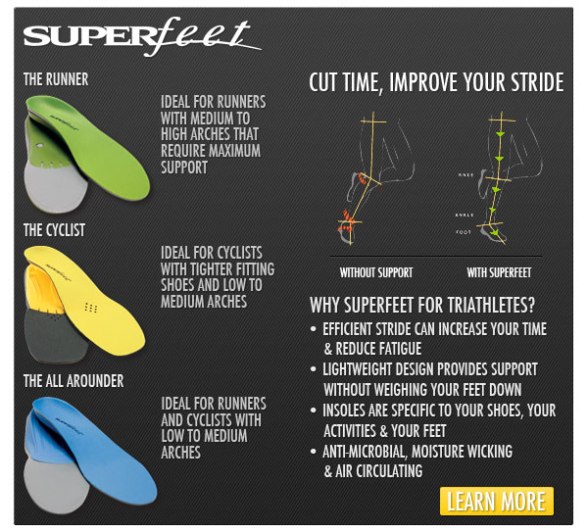
Fault me for thinking much about anything material, but man, I love my K-Swiss!
These came into the shop for me today, and since I first saw these shoes at Ironman events and around the web, I’ve fancied a pair for myself. Can you imagine my satisfaction when the first shipment of the year arrived to the warehouse?
You can call this my K-Swiss K-Ona review.
Upon coming home from happy hour drinks with a friend of mine, I changed into my running gear and went out the door with these shoes on. 4 miles later, and not without some burping, I returned.
The fit. These shoes were true to size. I’ve worn many athletic shoes, and for the major brands, I’ve always been a 12. For K-Swiss, I’m a 12. Score! As shoe makers since 1966, these guys have experience on their side.
The upper. Breathable and light, the upper had just enough material to where I felt my feet were hugged without being at risk for exposure to the elements. I don’t plan on trail running with these shoes, but I actually like to have my feet protected.
The sole. I’m a mid-foot/fore-foot striker. Wearing these weren’t a problem with my running style at all. The type of adjustment I had to make from the Zoot Kalani was somewhat nominal, but there was a slight difference – a 2mm differential. The Zoot Kalani’s heel to toe differential is 12mm, whereas the K-Swiss K-Ona is 10mm. This profile encourages mid-foot strikes, representing a more efficient running style. All of the Zoot triathlon shoes with the exception of the Kalani has this 10mm difference between the heel and toe. This differential is great when coming right off the bike.
The support on this shoe is designed for mild to over-pronation.
The feel. Comfortable, supportive, and light. With the weight of the shoe being just a mere 9 oz., I can see myself running races – in all sorts of distances.
Special Features. Drainage holes. This is a unique feature to triathlon shoes. You’ll learn to appreciate this at the aid stations.
I like these shoes, and I’m looking forward to trying out some more K-Swiss run shoes.
See more pictures by clicking on the image below.



 October 26, 2012
October 26, 2012 




 Supinator
Supinator




















